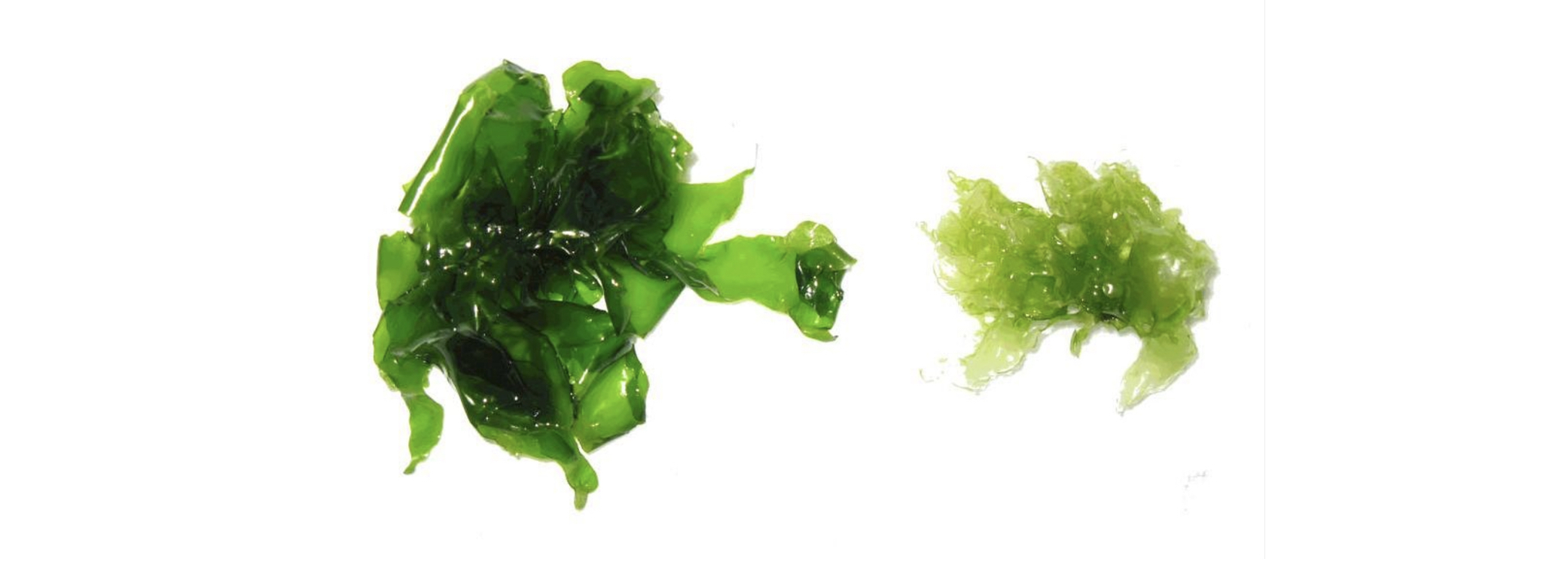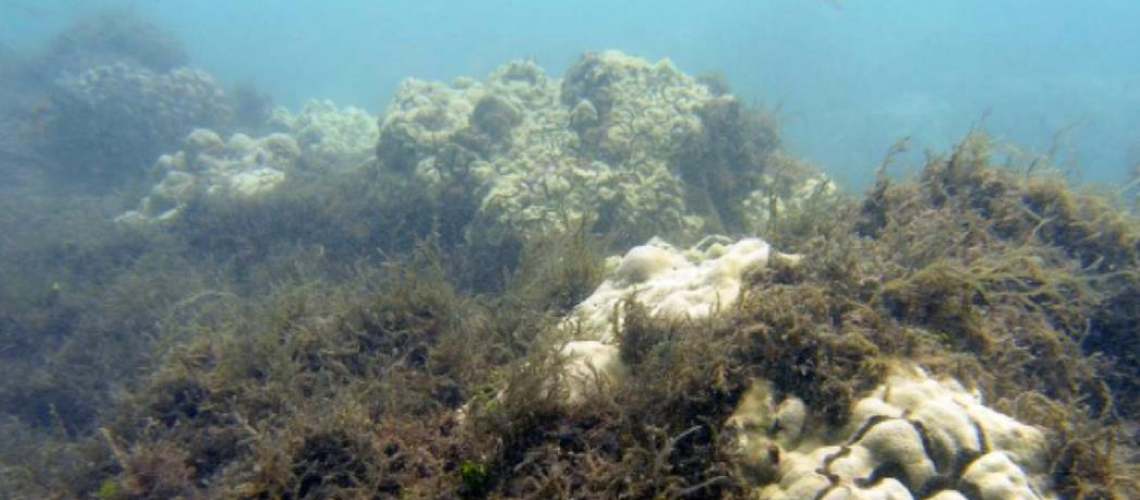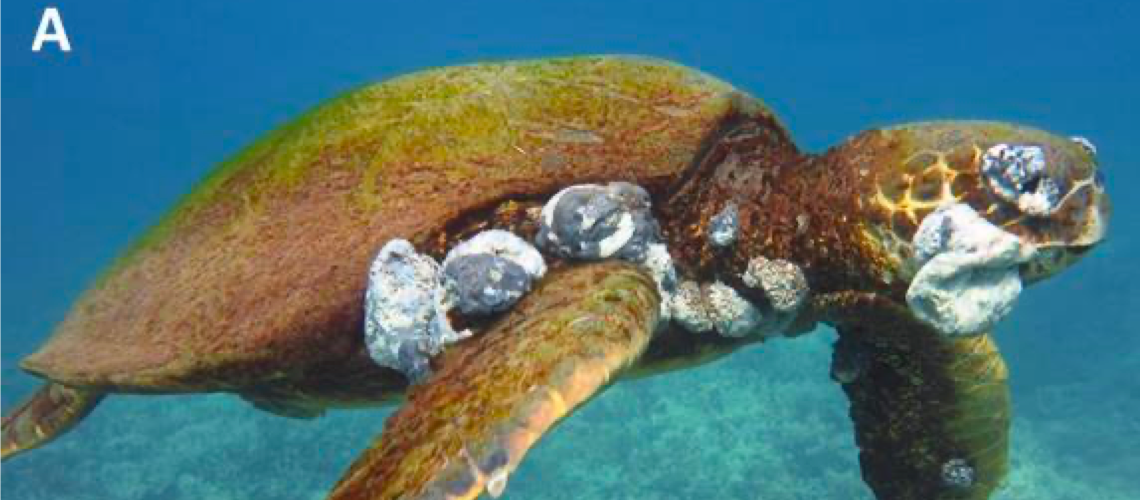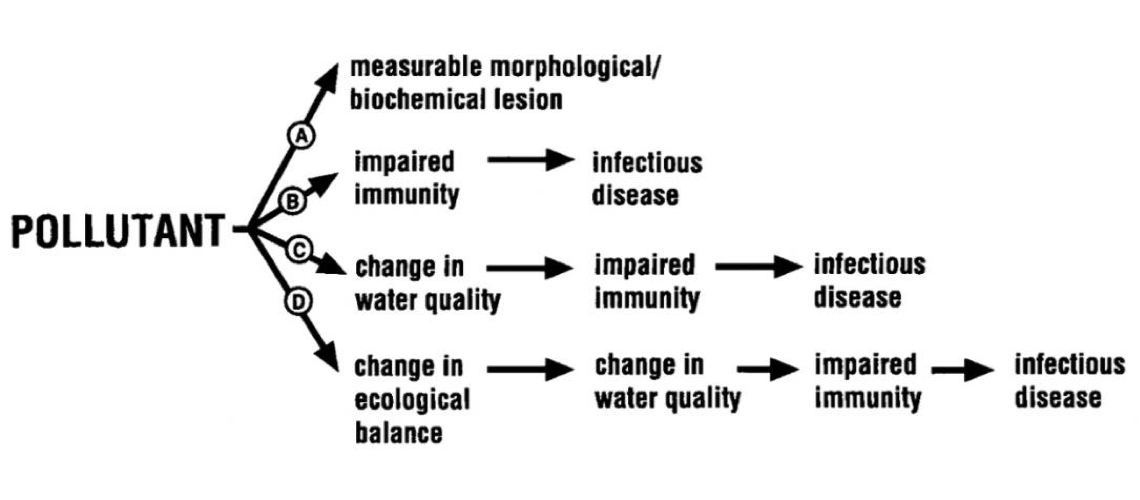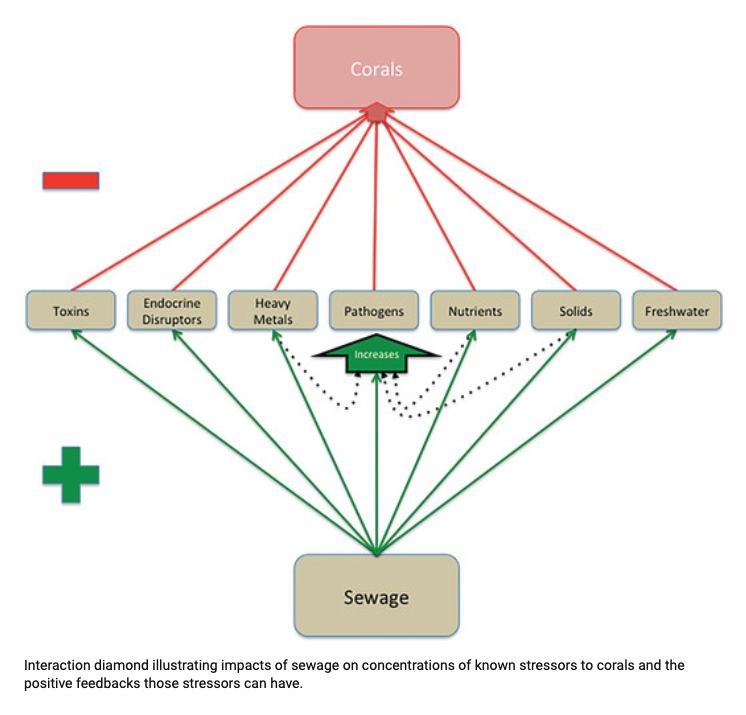Do you know what species live downstream from your flushes in nearshore reef ecosystems?
A large number of unique marine life species live in nearshore ocean waters that are downstream from all disposal methods. Explore these colorful reef species images, learn the scientific name and Hawaiian name for those that have one, and explore a link to more information for each species
-
How does Pukalani's nutrient pollution compare?
Most recent water quality data nutrient estimates comparison
DISPOSAL METHOD Yearly Gallons not reused (Gal/resident/year) Effluent Total Nitrogen Concentration (mg/L) HAR 11-54 open coastal water quality standard "do not exceed more than 2% of the time" (2014) Total Nitrogen Concentration (mg/L) Effluent Total Nitrogen concentration multiples of open coastal standard (X multiples) Effluent Total Phosphorous Concentration (mg/L) HAR 11-54 open coastal water quality standard "do not exceed more than 2% of the time" (2014) Total Phosphorous Concentration (mg/L) Effluent Total Phosphorus concentration multiples of open coastal standard (X multiples) Effluent Total Nutrients Nitrogen + Phosphorous Mass (lbs/resident/year) Kahului WWRF 36,389 10.47 0.35 30 1.17 0.06 20 3.3 Kihei WWRF 9,818 11.35 0.35 32 0.864 0.06 14 1.1 Lahaina WWRF 20,696 6.28 0.35 18 0.216 0.06 4 1.1 Pukalani WWRF 1,118 13.1 0.35 37 0.35 0.06 6 0.2 Septic 37,261 < 82 0.35 < 234 < 22 0.06 < 367 < 32.3 Cesspool 37,261 < 90 0.35 < 257 < 20 0.06 < 333 < 34.2 Hono Kai 37,261 24.4 0.35 70 2.95 0.06 49 8.5 Island Sands 37,261 12.9 0.35 37 4.9 0.06 82 5.5 Ka Nai A Nalu 37,261 24.6 0.35 70 4.58 0.06 76 9.1 Lauloa 37,261 21.6 0.35 62 3.98 0.06 66 7.9 Ma'alaea Banyans 37,261 25.5 0.35 73 5.28 0.06 88 9.6 Ma'alaea Kai 37,261 11.9 0.35 34 1.82 0.06 30 4.3 Ma'alaea Mermaid 37,261 26.9 0.35 77 3.7 0.06 62 9.5 Ma'alaea Yacht 37,261 34.5 0.35 99 3.78 0.06 63 11.9 Makani A Kai 37,261 10.59 0.35 30 1.4 0.06 23 3.7 Milowai 37,261 40.8 0.35 117 9.75 0.06 163 12.7 -
How does Pukalani's fecal coliform compare?
Most recent water quality data fecal coliform estimates comparison
DISPOSAL METHOD Yearly Gallons not reused Effluent coliform Cell Counts coliform EPA freshwater recreation standard Cell Counts (1976) Effluent coliform Cell Counts Gal/resident/year MPN/100mL water MPN/100mL water MPN/resident/year Kahului WWRF 36,389 > 2419.6 200 > 3,332,923,119 Kihei WWRF 9,818 248.9 200 92,506,220 Lahaina WWRF 20,696 < 1 200 < 783,420 Pukalani WWRF 1,118 < 1 200 < 42,314 Septic 37,261 < 160,000,000 200 < 225,676,194,470,394 Cesspool 37,261 < 100,000,000 200 < 141,047,621,543,996 Hono Kai 37,261 ≧ 1600 200 ≧ 2,256,761,945 Island Sands 37,261 2 200 2,820,952 Ka Nai A Nalu 37,261 < 2 200 < 2,820,952 Lauloa 37,261 17 200 23,978,096 Ma'alaea Banyans 37,261 < 20 200 < 28,209,524 Ma'alaea Kai 37,261 16,000 200 22,567,619,447 Ma'alaea Mermaid 37,261 < 2 200 < 2,820,952 Ma'alaea Yacht 37,261 4 200 5,641,905 Makani A Kai 37,261 ≧ 1,600 200 ≧ 2,256,761,945 Milowai 37,261 17 200 23,978,096 -
Pathogenic Life Forms
Interesting Facts about Injection Pathogenic Life Forms
LIST OF PATHOGENIC (ILLNESS-CAUSING) LIFE FORMS COMMONLY FOUND IN INFECTED WASTEWATER, SUCH AS R-3 INJECTED IN KIHEI AND KAHULUI
The list of pathogenic microbial species commonly found in non-disinfected wastewater is long and alarming, shown in the U.S. NIH list below.
Respiratory infections such as COVID-19 and skin infections can be caused by water borne pathogens.
The major pathogens of concern in municipal wastewater and diseases or illness associated with them:
Name of pathogen
Major disease or symptoms
Bacteria Campylobacter jejuni Gastroenteritis Escherichia coli Gastroenteritis Salmonella spp. Salmonellosis, typhoid, paratyphoid Shigella spp.
Bacillary dysentery Staphylococcus Skin Infections, bacteremia, toxic shock syndrome, septic arthritis Streptococcus Cellulitis, Pink eye, meningitis, pneumonia, endocarditis, necrotizing fasciitis Vibrio cholerae Cholera Yersinia spp. Gastroenteritis Viruses Adenovirus Upper respiratory infection and gastroenteritis Astrovirus Gastroenteritis Coxsackie virus Meningitis, pneumonia, fever Echovirus Meningitis, paralysis, encephalitis, fever Hepatitis virus Infectious hepatitis, miscarriage, and death Human calicivirus Epidemic gastroenteritis with severe diarrhea Polio virus Poliomyelitis Reovirus Respiratory infections, gastroenteritis Rotavirus Acute gastroenteritis with severe diarrhea TT hepatitis Hepatitis COVID-19 Acute respiratory illness Protozoa
Balantidium coli Balantidiasis Cryptosporidium spp. Cryptosporidiosis Entamoeba histolytica Acute amoebic dysentery Giardia duodenalis Giardiasis Toxoplasma gondii Toxoplasmosis Helminths Ascaris lumbricoides Ascariosis Ascaris suum Coughing and chest pain Hymenolepis nana Hymenolepiasis Necator americanus Hookworm disease Taenia saginata Insomnia, anorexia Taenia solium Insomnia, anorexia Toxocara canis Fever, abdominal pain, muscle ache Trichuris trichiura Diarrhea, anemia, weight loss

